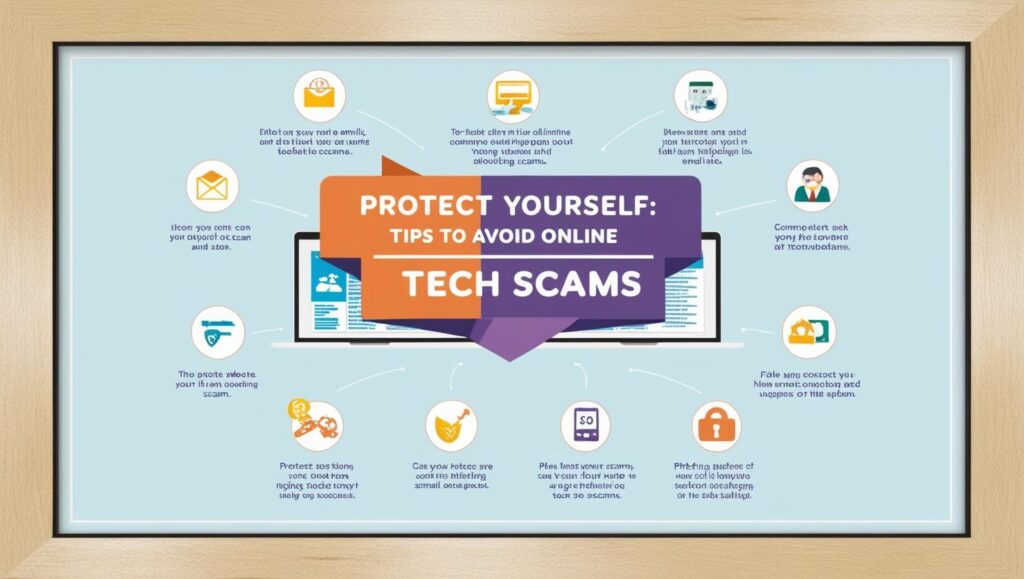In an increasingly digital world, online tech scams have become a pervasive threat, targeting individuals and businesses alike. With cybercriminals employing more sophisticated tactics to deceive unsuspecting victims, it’s crucial to stay informed and vigilant. This article delves into practical tips and strategies you can use to protect yourself from the relentless tide of online scams.
Protect Yourself: Tips to Avoid Online Tech Scams
The digital landscape, while convenient and efficient, is fraught with potential threats from cybercriminals seeking to exploit vulnerabilities. One of the simplest yet most effective ways to protect yourself is by practicing good password hygiene. Passwords should be complex, combining letters, numbers, and special characters, and they should be changed regularly. Additionally, using a reputable password manager can help keep your credentials secure and organized, reducing the risk of unauthorized access.
Another essential practice is to stay updated on the latest phishing techniques. Phishing scams often appear as legitimate emails or messages from trusted sources, tricking individuals into divulging personal information. Be wary of unsolicited communications asking for sensitive information, and always verify the authenticity of the sender before clicking on links or downloading attachments. Educating yourself on the common traits of phishing emails can help you recognize and avoid them.
Two-factor authentication (2FA) adds an extra layer of security to your online accounts, making it significantly harder for scammers to breach them. By requiring a second form of verification, such as a text message code or biometric scan, 2FA ensures that even if a password is compromised, unauthorized access is still unlikely. Implementing 2FA on all accounts that offer it is a proactive measure that can greatly enhance your online security.
Essential Advice to Combat Cyber Fraud Tactics
Cybercriminals are constantly adapting their tactics, which makes staying informed crucial in the fight against online fraud. Regularly updating your devices and software ensures that you benefit from the latest security patches and features. Software developers frequently release updates to address newly discovered vulnerabilities, and neglecting these updates can leave your devices open to attacks.
Public Wi-Fi networks are notorious for lacking security, making them a hotspot for cybercriminal activity. When using public Wi-Fi, avoid accessing sensitive accounts or conducting financial transactions, as these networks can be easily intercepted by hackers. Employing a virtual private network (VPN) can provide an additional layer of encryption, safeguarding your data against potential eavesdropping or theft while using public networks.
Being cautious about sharing personal information online is another key strategy in combating cyber fraud. Social media platforms, while popular and engaging, can inadvertently expose you to risks if privacy settings are not properly configured. Limit the amount of personal information shared publicly and be mindful of friend requests or messages from unknown individuals. Cybercriminals often use social engineering tactics to gather information that could be used in future scams or identity theft.
As technology continues to evolve, so too do the methods employed by cybercriminals. Staying vigilant and informed is your best defense against online tech scams. By implementing the tips outlined in this article, you can significantly reduce your vulnerability and ensure a safer online experience. Remember, in the digital age, awareness and proactive measures are your strongest allies in the ongoing battle against cyber fraud.


